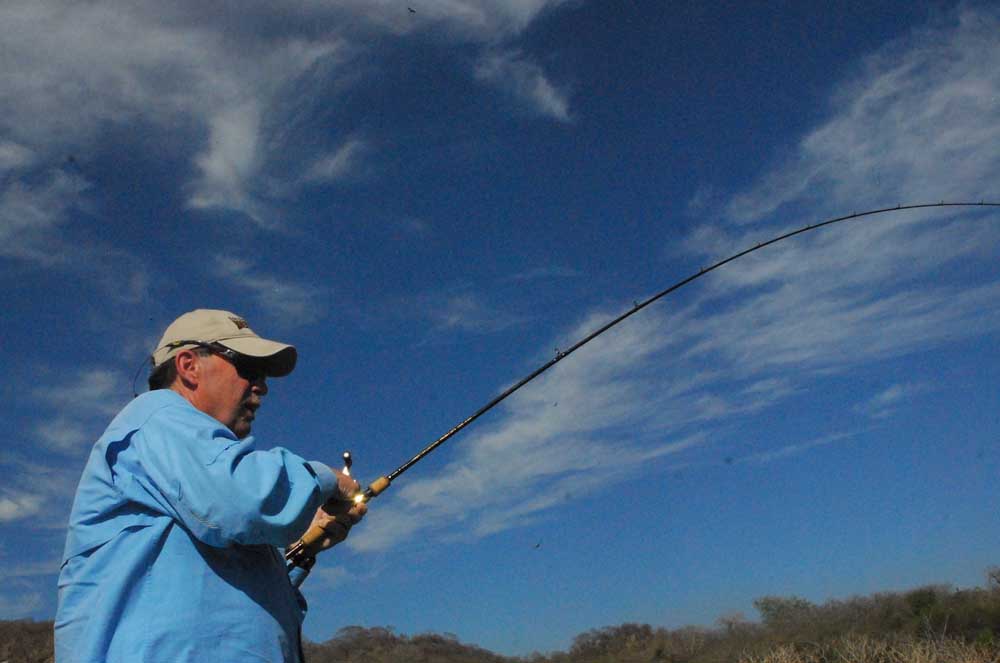Tough Choice: Which comes first, the rod or the reel
Published 3:11 pm Thursday, January 27, 2022

- For a lot of bass fishermen, the question is whether it is more important to put more money into a good rod or a good reel.
It is the bass fisherman’s version of that age-old question of what came first, the chicken or the egg. In this case, it is the rod or the reel.
At least it is for the fisherman on a budget.
Trending
“I think the rod is the most important of the two. Balance, action, sensitivity, that is priority No. 1 by a long shot,” said Gary Dobyns of Dobyns Rods.
A competitive fisherman with over 100 tournament victories, Dobyns has been designing rods since the 1980s, opening Dobyns Rods in 2009. For the last three years, the company has based its operations in Sulphur Springs.
Now before you suggest he has a financial bias, Dobyns also has a line of reels, or at least hopes to by this spring if the supply chain straightens out. And he definitely has an opinion of what fishermen should consider when reel shopping.
“Reels have gotten so much better over the years, especially spinning reels. You can spend $100 and buy a spinning reel that any topflight tournament fisherman can win a tournament with,” Dobyns noted.
He said when it comes to baitcasting reels, the key is finding ones that are built to last. There is a movement lately of going light weight with the theory it helps maximize rod performance and balance. Dobyns does not agree.
“I am not a big fan of the super, super light reels. I think they need a little metal in there, especially in a tournament,” he said. Dobyns added that as far as balance, if the rod is well balanced, reel weight is not really going to matter since all rods are built to support average weight reels.
Trending
He said the quality of the reel is much more important than the weight. Dobyns looks for reels that are smooth to operate, and that is dependent on things like bearings, gears and drag washer quality.
“Bearings play a huge role. Everyone gets hung up on bearing count, but you need to remember some of those are in the handle. What is important is that there are a good amount of bearings and quality is a plus,” he said.
Dobyns offered an industry insider tip explaining that many manufacturers use machines running at high speeds to cut gears for economic reasons, but they are not as smooth as those cut at a slower speed.
While he said the key to a good reel is not being able to feel the gears, what is the best way to know?
“Honestly I don’t know. I do it by feel only. Some do it strictly on price, figuring a $200 reel has to be better than a $100 one,” Dobyns said.
There are things fishermen can check out in the store, features like how easy the magnetic controls are to use and the size of the handles. Dobyns suggests just giving it the once-over to see if it is smooth operating, feels solid and everything fits right.
Gear options are also important with baitcasting reels running from 4:1 to 10:1. For years a 6:1 was the standard, but fishermen have been leaning more toward 7:1 recently. One thing to remember is the higher the gear ratio, or retrieval speed, the less torque.
Ironically, Dobyns believes rods are harder to pick out.
“Maybe it is just because I am a rod guy, but rods are truly more difficult. You have length, balance, guide placement and guide size,” he explained.
In recent years Dobyns has offered some combo medium and medium heavy weight rods that can be used for a variety of techniques. However, he said by matching rods to specific techniques fishermen will land more fish because they work the bait better.
“In East Texas we are fishing lakes with a lot of logs and cover. You could hook up with a big fish at any time. I think you could get by with four or five rods,” he said.
His lineup would include one spinning rod, and a caster each for crankbaits, flipping, and a medium or medium-heavy for baits like Chatterbaits, spinners, jigs and Carolina rigs.
While fishing electronics are going through an ongoing increase in technology, Dobyns said he does not see any major changes on the horizon for rods or reels.
“Materials continue to get better. The difference from when I started a rod company is night and day, but I don’t see changes in the next 10 years like we have had in the last 10 years,” Dobyns said.
He does predict the biggest change for reels may be chip technology to eliminate backlash.





